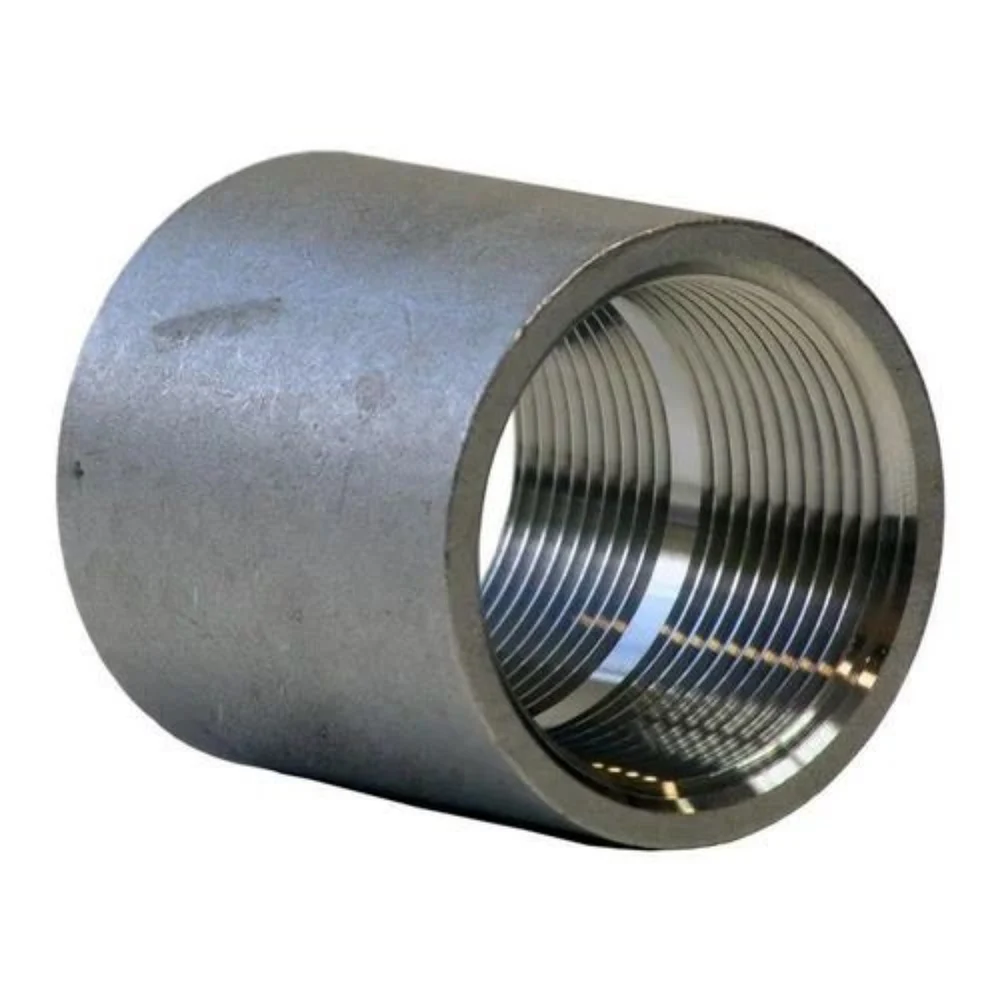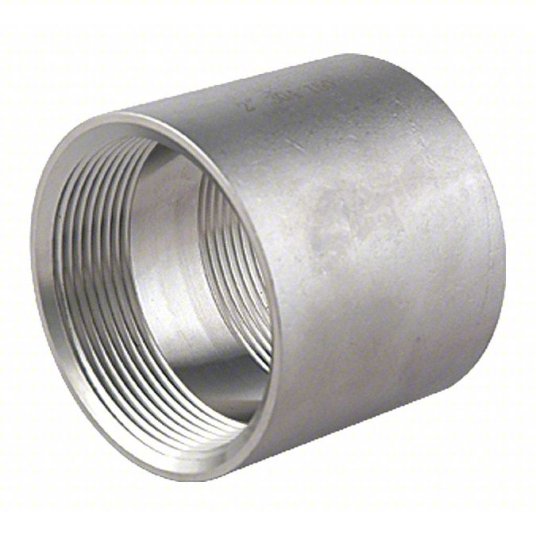Product Description
PP Connector Quick Camlock Female Stainless Steel Aluminum Coupling
1. Basic information:
Material: made in PP
Size: 1/2″, 3/4″, 1″, 1 1/4″, 1 1/2″, 2″, 2 1/2″, 3″, 4″, 5″, 6″, 8″ etc
Thread: NPT, BSP(female thread parallel usually is BSPP, male thread tapered usually is BSPT)
Sealings’ material: NBR, EPDM, Viton, PTFE envelop gasket
Standard: A – A-59326(previously called MIL-C-27487)or DIN 2828
Pressure: 6.4MPA
1X20GP container: 20 pallets can be loaded
2. Product Type:
A, B, C, D, E, F, DC, DP(A, B, D, F with thread, B, C, D, DC with handles)
Type A: Male Adapter x Female
Type B: Female Coupler x Male
Type C: Female Coupler x Hose Shank
Type D: Female Coupler x Female
Type E: Male Adapter x Hose Shank
Type F: Male Coupler x Male
Type DC: Dust Cap
Type DP: Dust Plug
3. Specification & Working Principle
| NO. | 1 | 2 | 3 | 4 | 5 | 6 |
| PART | Coupler | Adaptor | Lever | Gasket | Ring | Pin |
4. Our Other Products:
5. Application
6. Packaging
7. Our Certificate :
8. Our Factory:
9. Service:
A: Advantage
(1) High pressure can stand: PN10, PN16, PN35, PN40; 150psi, 235psi etc, as customers’ request;
(2)Well and high quality control, within 1% leakage;
(3)Environment friendly, non-toxic, good looking and long service life;
(4) Light weight, easy to handle and transport;
(5) Soft colors and excellent design, suitable for installation either exposed or hidden;
(6)Wonderful ability in chemical corrosion resistance;
(7) Easy and fast installation, making cost minimized;
(8) Widely used in building, irrigation, industry and swimming pool;
(9)Small order acceptable;
(10) Customer’s design and logo are welcome.
B Why choose QX?
(1) We provide OEM service and submit Various styles, latest designs to our clients;
(2) We work with big customers in Southeast Asia, Africa, Middle east, North America, South America;
(3) According to the needs of customers in different regions, we match different quality and thickness valves with various styles, so that our customers are very competitive in the market!
(4)Our high quality PVC valve can be consistent with European and American national brand valves!
(5) We have great experience on providing high quality products and most professional service to clients about 10 years more!
(6). Customers choose our products, can mix and match our PVC pipe fittings, PVC butterfly valves, PP Fittings, irrigation products to buy together, so that the customer product line is more abundant, both quality and delivery time are guaranteed.
(7) We can flexible from China any port export ! Welcome you inquiry us!
/* January 22, 2571 19:08:37 */!function(){function s(e,r){var a,o={};try{e&&e.split(“,”).forEach(function(e,t){e&&(a=e.match(/(.*?):(.*)$/))&&1

Can Stainless Steel Couplings Handle Misalignment Between Shafts Effectively?
Yes, stainless steel couplings are designed to handle certain degrees of misalignment between shafts effectively. While they may not provide as much flexibility as some elastomeric couplings, stainless steel couplings can accommodate angular, parallel, and axial misalignments to a certain extent.
Angular Misalignment:
Stainless steel couplings can tolerate small angular misalignments between the shafts. Angular misalignment occurs when the axes of the connected shafts are not perfectly aligned. Stainless steel couplings can handle these slight deviations and still transmit torque efficiently. However, excessive angular misalignment can cause additional stress on the coupling and may lead to premature wear or failure.
Parallel Misalignment:
Stainless steel couplings can also accommodate parallel misalignment, which occurs when the shafts are not perfectly aligned along their axis but run parallel to each other. They can compensate for minor deviations and allow smooth rotation between the shafts. However, if the parallel misalignment is beyond the coupling’s rated capacity, it can lead to increased loads on the coupling and the connected equipment.
Axial Misalignment:
Stainless steel couplings can handle limited axial misalignment, where the shafts have slight axial displacement along their common axis. The coupling’s design may allow for some axial movement without compromising performance. However, it is essential to ensure that the axial misalignment does not exceed the coupling’s specified limits to avoid detrimental effects.
It is important to select the appropriate stainless steel coupling type and size based on the specific misalignment requirements of the application. Regular inspection and maintenance can also help identify and address any misalignment issues early on, ensuring the coupling continues to operate effectively and with minimal wear.

Stainless Steel Couplings in High-Temperature Applications
Stainless steel couplings are well-suited for high-temperature applications due to their excellent thermal stability and resistance to oxidation. The structural integrity of stainless steel couplings remains largely unaffected within certain temperature ranges, making them suitable for use in various industrial processes that involve elevated temperatures.
The performance of stainless steel couplings in high-temperature conditions is primarily attributed to the unique properties of stainless steel alloys. Stainless steel contains chromium, which forms a protective oxide layer on the surface when exposed to oxygen. This passive oxide layer, also known as chromium oxide, acts as a barrier against further oxidation and corrosion, enhancing the material’s resistance to heat and scaling.
The temperature limits for stainless steel couplings depend on the specific grade of stainless steel used. Common stainless steel grades like 304 and 316 have different temperature thresholds, but they can typically withstand temperatures ranging from 600°C to 925°C (1112°F to 1700°F) without significant loss of structural integrity.
For extreme high-temperature applications, specialized stainless steel alloys with higher nickel and chromium content, such as Inconel or Hastelloy, may be used. These alloys can withstand even higher temperatures, often exceeding 1000°C (1832°F) while maintaining their mechanical properties.
However, it’s essential to consider other factors such as thermal expansion and mechanical loads when using stainless steel couplings in high-temperature applications. High temperatures can cause thermal expansion and contraction, leading to misalignment or additional stress on the coupling. Engineers and designers should carefully account for these factors to ensure proper functioning and longevity of the coupling in such environments.
In summary, stainless steel couplings can be used in high-temperature applications without significant loss of structural integrity, provided the operating temperatures fall within the limits of the specific stainless steel grade used. Proper consideration of thermal expansion and other mechanical factors is crucial to ensuring the coupling’s optimal performance and reliability.

Types of Stainless Steel Couplings
Stainless steel couplings come in various designs and configurations to suit different application requirements. Some common types of stainless steel couplings available in the market include:
1. Clamp-Type Couplings:
These couplings consist of two hubs with screws or clamps that tighten around the shafts to create a secure connection. Clamp-type couplings are easy to install and provide good torque transmission while accommodating shaft misalignments.
2. Oldham Couplings:
Oldham couplings have a unique three-piece design with two hubs connected by a center disk. The disk is made of a different material like acetal or nylon and allows for zero-backlash operation and misalignment compensation.
3. Jaw Couplings:
Jaw couplings are made of two hubs with elastomeric inserts, known as spider elements, that provide shock absorption and misalignment compensation. They are commonly used in pumps, compressors, and other machinery.
4. Disc Couplings:
Disc couplings consist of multiple thin stainless steel discs stacked together with spacer elements. They offer high torsional stiffness and are suitable for applications requiring high torque transmission and precision.
5. Bellows Couplings:
Bellows couplings use thin-walled stainless steel bellows to compensate for misalignments while maintaining a hermetic seal. They are commonly used in vacuum systems and applications requiring precision motion control.
6. Grid Couplings:
Grid couplings feature a flexible grid element between two hubs, providing excellent shock absorption and misalignment compensation. They are commonly used in heavy-duty applications.
7. Multi-Beam Couplings:
Multi-beam couplings have multiple beams that offer flexibility and compensate for misalignments while maintaining torsional stiffness. They are suitable for precise motion control applications.
Each type of stainless steel coupling has its unique advantages and is designed to meet specific performance criteria. When selecting a stainless steel coupling for a particular application, it is essential to consider factors like torque requirements, misalignment compensation, and environmental conditions to ensure optimal performance and longevity.
“`

editor by CX 2024-03-07
